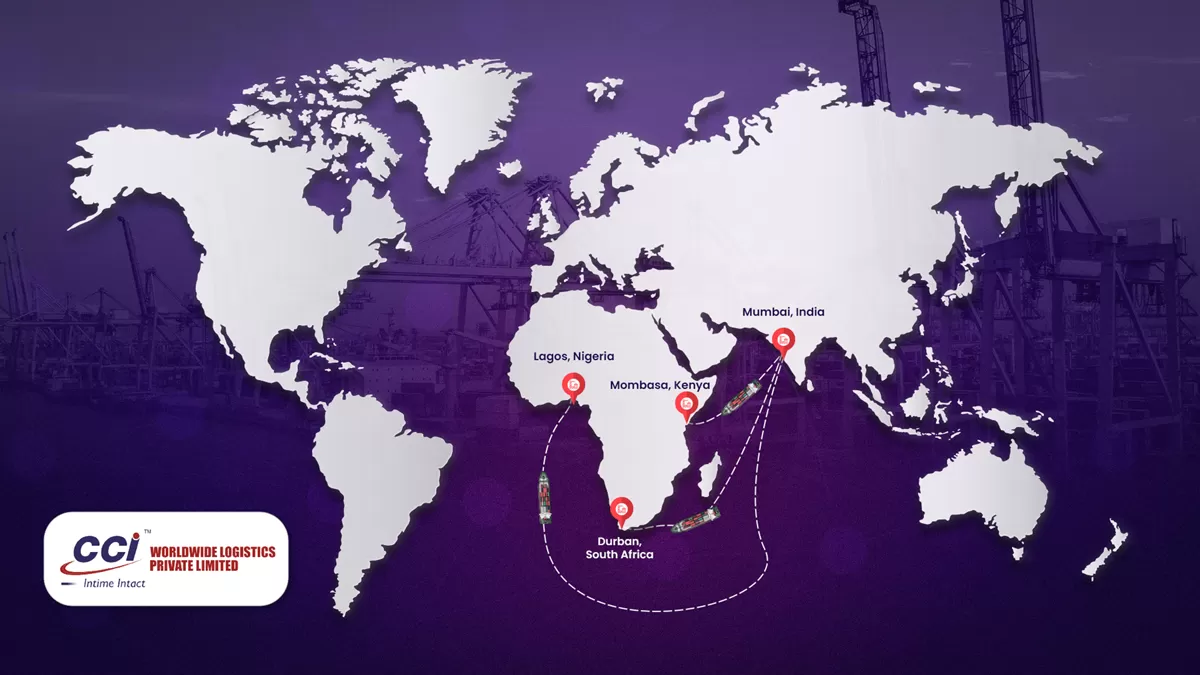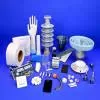In the next in a series of features showcasing building materials,
Anomitra Chakravarty discusses varieties of wood-plastic composites and their applications in the building and construction sector.
When wood product companies embarked on a voyage to search for a material that would be an independent material by itself when combined with wood, they zeroed in on wood-plastic composites (WPC). WPCs combine the favourable performance and cost attributes of both wood and thermoplastics. Unlike wood, plastics enjoy attributes like resistance to moisture and insects and can hence contribute to making new construction materials. As for wood, plastic processors see it as a readily available and relatively inexpensive filler that can lower their resin costs, add stiffness, and increase profile extrusion rates; also, wood cools faster than plastics. Moreover, WPCs can be fastened, sanded, stained and machined in the same way as wood without the need to invest in new equipment.
Anomitra Chakravarty, Director, KPS Consultants & Impex Pvt Ltd, discusses the types of WPCs, their end applications, advantages and benefits vis-a-vis wood, and potential usage in green buildings with CW...
Wood-HDPE composites
WPC is a combination of low-cost cellulose based fillers (wood flour, rice husk, bagasse, bamboo pulp, cotton plant stalk power, etc) and scrap plastic (HDPE, LDPE, PVC, PP, etc). Although processed (extruded) like plastic, wood - high density polyethylene (HDPE) composite behaves like wood. With the main ingredients being wood flour and scrap or recycled HDPE, it is most suitable for outdoor flooring and decking, railings, fencing, park benches, roofing or sheds, wall cladding, portable cabins, etc. In addition, these are extensively used in marine transport and warehousing pallets that require no fumigation compared to wooden pallets.
Compared to conventional preservative treated hardwoods, wood-HDPE composite is an advantageous material. Its market price ranges from Rs 60 to Rs 75 per kg. However, not going by the initial cost, one should consider the installation and lifetime maintenance costs. Highly durable, it not only incurs low maintenance cost, but comes with a warranty of over 10 years. Resistant to moisture, rotting, cracking and splitting, it can be produced in various colours and shades. Avoiding the need for paint or varnish, it can be manufactured aesthetically, similar to wood, and hence be nailed, sawed, sanded, screwed, etc. Also, while additives for special properties like UV or weather resistance can be used, efficient use of scrap makes it an economical and environment-friendly material.
Wood-PVC foamed celuka board
Made of wood flour and both virgin and recycled PVC resin, wood-poly vinyl chloride (PVC) foamed celuka board is extruded like a thermoplastic with excellent dimensional accuracy. On extrusion, the material has a hard, smooth and glossy surface. Owing to foaming, the apparent density of the material can range from 0.50 g/cc to 0.70 g/cc. It is a competitive substitute for plywood, plyboard and MDF in end applications like kitchen and bathroom cabinets, cupboards, closets, office furniture, wall panelling, siding, flooring, etc. Resistant to water, moisture and rotting, this material does not crack or split like wood and its high dimensional accuracy results in less wastage during processing. With good flame retardation owing to the presence of chlorine, this material, though processed like plastic, behaves like wood. It does not expand or contract with change in temperature and moisture and has good thermal and acoustical insulation properties. With a variety of cellulosic raw materials, the board is economical and eco-friendly and serves as an additive for properties like impact and UV resistance, biocide, etc.
Moreover, these foamed celuka boards are usually produced in thickness ranging from 5 mm to 25 mm with a width up to 4 ft. The common sizes are 4 ft x 8 ft x 12 mm and 4 ft x 8 ft x 16 mm and market price for an 18 mm board ranges between Rs 120 and Rs 140 per sq ft. Although its initial cost is comparable to branded BWR grade plywood, processing and finishing costs are much lower. Moreover, unlike ply-wood, no veneer or high-pressure laminate is required. Lifetime performance cost is less as it has higher durability and costs less to maintain. Also, unlike plywood, the wood-PVC celuka board does not release any formaldehyde, indicated as a possible carcinogenic material in the West.
Doors, windows and frames
Wood-PVC composite is usually used for the extrusion of ribbed profile doors. The density of this material ranges from 0.70 g/cc to 0.90 g/cc. The standard width of the extruded door is around 915 mm (3 ft), thickness around 45 mm, and length as required. The door surfaces are laminated with wood grain design vinyl overlays of various colours and shades. The door surface can be engraved with various designs for an aesthetic look.
Amongst its many features are its high impact strength, wear-resistance, excellent moisture and water resistance, resistance to termites and insects, and no cracking and warping. Durable, this material looks like natural wood without timber flaws. It is rot and mould-proof and, being weather resistant, falls under a wide temperature range of 40¦C to 60¦C. Resistant to the action of acid and alkali, this material is non-toxic without any formaldehyde and heavy metals. It is easy to install and clean, is available in various finishes and appearances, and is suitable to work with any wood processing tools. The market price of WPC doors range from Rs 200 to Rs 400 per sq ft.
Usage of WPC in green buildings
The LEED Indian green building rating system evaluates the environmental performance of a building, providing a definitive standard for what constitutes a 'green building'. The rating system is organised into five environmental categories: sustainable sites (max 13 points); water efficiency (max 6 points); energy and atmosphere (max 17 points); materials and resources (max 13 points) and indoor environmental quality (max 15 points). An additional category, innovation and design process (max 5 points), addresses sustainable building expertise as well as design measures that are not covered under the five environmental categories. Hence, total maximum points of 69 can be achieved.
Incorporating WPC materials can help builders, architects and project managers achieve the LEED rating in several areas like recycled content, low emitting mate-rials, regional materials and innovation in design. With minimum 26 points being the requirement, more than nine points can be cost-effectively achieved through the use of these materials.
In the case of recycled content credit, according to the rating system, projects that include 10 per cent recycled content are eligible for one LEED credit, while projects that include 20 per cent recycled content are eligible for two credits. WPC materials - particularly outdoor decking, indoor flooring, wall panels, partitions, railings, furniture - can make significant contributions towards earning these credits. Similarly, for indoor environmental quality credits, the main criterion is that composite wood and agri-fibre products should not contain any added urea or formaldehyde resins. Hence, this can be fulfilled with all WPC materials as opposed to plywood, plyboard, MDF, HDF, etc. Also, in the case of regional materials credit, projects can achieve one point where 10 per cent of building materials are manufactured locally and two points for projects that source 20 per cent of building materials locally. WPC materials may also be used for kitchen and bathroom cabinets, room doors, flooring, staircase, cupboards, closets, and office furniture, etc.
Worldwide reach
WPC's worldwide production is estimated to be around 1.5 million tonne with North America accounting for around 800,000 tonne, Europe for around 400,000 tonne, China around 200,000 tonne and Japan around 100,000 tonne. Wood-PE composite materials account for about 65 per cent and wood-PVC composite materials account for about 25 per cent of the total WPC materials produced. In India, at present, there are around 15 medium-scale units producing different types of WPC materials. There are also many distributors who import the material and market it in India. However, owing to its unorganised nature, it is difficult to provide production and consumption figures of the WPC industry in India.
The national level
WPC materials have been in existence commercially for about 30 years now. The generic term, 'plastic lumber', is also used in the West to describe these materials. In India, organisations like CIPET (Central Institute of Plastics Engineering and Technology) provide testing and certification facilities for these materials. Similarly, at CBRI (Central Building Research Institute), Roorkee, systematic R&D has been initiated on the manufacturing of rice husk plastic composite granules and their mouldings in extrusion for wood substitute products. Moreover, while the American Society for Testing & Materials has developed the standard ASTM D7031-11 as a guide for evaluating mechanical and physical properties of WPC products, there are no comparable BIS standards in India as on date. In fact, no noteworthy commercial building has ever used these materials on a large scale in India. It's unfortunate - but it's never too late!

















